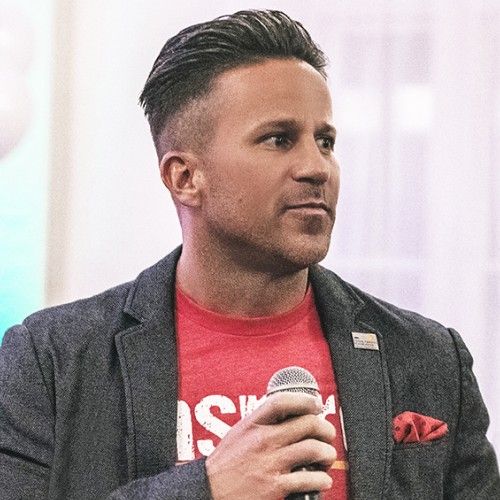In the ever-evolving corporate environment, setting clear and actionable objectives is a critical responsibility of every leader. Companies have been navigating a world which has been formed through digital changes and a rapidly changing workforce. To sustain a competitive advantage and align with broader company objectives both employees and leaders must set goals that are ambitious, but also measurable and relevant. The SMART goal framework is an effective tool for creating specific measurable, achievable, relevant, and time-bound goals. Finding innovative paths to utilize this framework will enable teams to push boundaries and reach higher achievements.
For many individuals, the new year brings times of change and new beginnings. Commonly, this era of change can be overwhelming for the mental health of many individuals. A plethora of people start the year with a new mindset and goals in mind yet fail to achieve them. Tendencies of setting unrealistic or unattainable goals are common practices that must be broken. Setting realistic goals help divide achievements into smaller, more attainable targets. For the more crucial aspect of goal-making is creating timeout goals on a realistic deadline that enables a positive mindset towards reaching relevant objectives.
The SMART framework emphasizes setting Specific, Measurable, Achievable, Relevant, and Time-bound goals. By ensuring each goal meets the above criteria, individuals can create a clear timeline and roadmap to effectively track their progress. Moreover, this approach helps build momentum and confidence in addition to holding individuals and teams accountable. For professionals to best utilize the SMART goal framework, it is crucial to understand each individual aspect and how these tools can be utilized in the workplace:
Specific
SMART goals are meant to be specific in that they are not too vague and clearly identify a target. This could include a goal with a few targets, falling within it or one main specific target, but it should clearly outline the objectives that the individual is aiming to achieve. In circumstances where managers are creating these goals along with their employees or for their employees, leaders must be clear in their expectations and the deliverables expected from each specific target.
Measurable
Goals should be measurable, meaning that there are defined points, benchmarks, metrics, or evaluations that will objectively demonstrate the progress made or potential completion of the goal. While it is helpful to use qualitative measures such as percentage growth or a certain dollar amount of sales, goals can be measurable in a variety of ways. For example, a leader could be working to improve their team culture and use the team communication habits or norms as a measure of their success. The most crucial part of making a goal measurable is having a defined point from the beginning that will clearly demonstrate the progression of completing the objectives. In the professional environment, a useful tool that will enable individuals to measure their success is a tool such as AIM Insights. AIM Insights is a platform that enables both managers and their direct reports to track goals, achievements, and progress.
Achievable
SMART goals should also be realistically achievable. Frequently, individuals become discouraged or overwhelmed when tasked with overly optimistic, unattainable goals. When goals are broken down into smaller targets or objectives, individuals feel empowered to tackle small portions at a time, eventually completing the large goal. Thus, it is important to frame goals in achievable ways that are realistic for parties to complete. In the professional setting, team members can work to make goals achievable by reviewing past metrics and data as a benchmark and utilizing the information as a predictor for future capabilities and performance. Finding innovative ways to benchmark and track performance will give a more realistic understanding of a team or individual’s capacity, encouraging realistic and reachable goals.
Relevant
SMART goals should be relevant to the individual or team tasked with them. Most notably, the goal should be related to a broader idea project, or initiative that people may be working on. Furthermore, goals can be effective in aligning with personal, team or organizational objectives. When a goal is relevant in the workplace, it directly aligns to a professional’s role and responsibilities in the organization. Through enabling their direct reports to find this alignment, managers, and leaders set a great example for including relevant goals in the workplace. Additionally, leaders should ensure that goals are pertinent to the teams, challenges opportunities, and experience experiences to make them feel motivated and connected to the overall goal for the team or organization.
Time-Bound
A crucial aspect of setting SMART goals is ensuring that they are time-bound. Time-bound goals have a clear deadline or timeframe by which they must be achieved, which creates accountability and motivation for teams and individuals. When goals are set without a specific timeframe, many tend to procrastinate and usually make progress toward goals much slower. In the workplace, team leaders should be cognizant of direct reports' mental health and team-wide culture that can be impacted by setting goals within an unrealistic time frame. In many circumstances, inadequate time to complete the goal will result in poor performance, and high team, stress, and can severely detriment team culture.
Many see the start of the new year as an opportunity to reset and focus on self-improvement. In 2025, the smart goal framework remains an essential tool for navigating the complexities of the current workplace. Through intense eras of change, growth, and learning, SMART goals, are a great tool to utilize for tracking progress and creating some accountability. In the dynamic workplace, it is most important for professionals to set specific measurable, achievable, relevant, and time-bound goals to ensure clarity, focus, and improved communication. By incorporating the smart goal framework, many organizations may reap the benefits of improved productivity, communication, and team culture.




































































